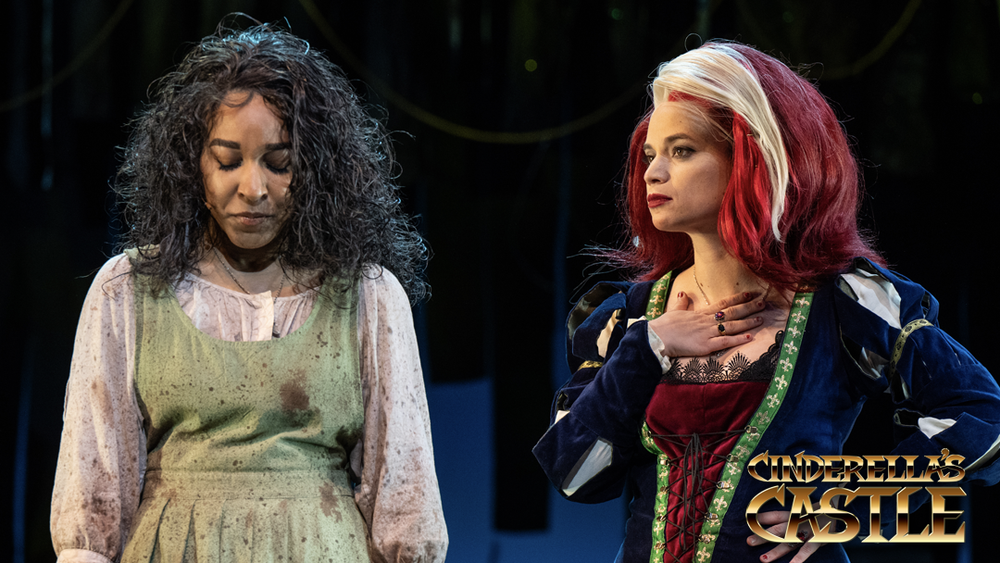“Cinderella’s Castle (2025)” is a new, darkly comedic retelling of a well-loved fairy tale, not just another adaptation. Nick Lang is the director of this satirical take on the classic Cinderella tale that blends comedy, fantasy, and musical elements to explore deeper themes. Here, we examine some of the main ideas that this original reworking explores.
Identity: The Quest for Self-Discovery
The central idea of Cinderella’s Castle is Ella Ashmore’s (Bryce Charles) voyage of self-discovery. Unlike classic fairy tales, where Cinderella’s identity is frequently predetermined by her external circumstances, this movie goes deeper into Ella’s internal conflict. This narrative explores the question of what constitutes an individual’s identity: social roles, personal goals, or a combination of the two. Ella sets out on an adventure to discover and embrace her actual self as she negotiates the difficulties posed by her stepmother and the magical aspects of the tale. This theme recurs frequently in the movie, emphasizing how facing and conquering both internal and external barriers is often necessary for personal growth.
Power Dynamics: The Influence of Authority
One of the main themes of Cinderella’s Castle is power dynamics. Subtly, the concepts of authority and influence are examined through the characters in the film. The portrayal of The Stepmother by Angela Giarratana exemplifies the misuse of power through cruelty and manipulation. Power can be corrupted, as demonstrated by Ella’s interactions with other characters and the Stepmother’s manipulation of her. Curt Mega’s portrayal of Tadius, on the other hand, embodies a different aspect of power that is more concerned with moral rectitude and individual fortitude. These characters’ differences offer a commentary on how, depending on how it is applied, power can both oppress and empower.
Transformation: Beyond Physical Change
Cinderella’s Castle frequently deals with transformation, but this theme goes beyond the conventional enchanted makeover. In addition to showing physical transformation, the movie also highlights psychological and emotional change. Ella’s journey involves not only changing how she looks but also how she approaches obstacles in life and changes her perspective. The magical aspects of the movie, where the characters go through profound transformations that represent their inner development, are a reflection of this theme. The movie makes the argument that genuine transformation is different from surface-level modification because it entails a more profound change in one’s character and viewpoint.
Satire of Fairy Tale Tropes
The satirical treatment of the classic fairy tale narrative in Cinderella’s Castle is one of its most notable features. The movie parodies well-known fairy tale tropes and characters by fusing dark comedy and fantasy. The hysterical takes on traditional elements and exaggerated portrayals aim to amuse as well as critique. For instance, Lauren Lopez’s portrayal of Rancilda offers a humorously dark take on the traditional villain, while the musical numbers and magical aspects subvert expectations in a playful way. Through this satirical lens, the movie tackles well-known subjects in a novel, captivating way.
The Role of Puppetry in Storytelling
More than just a whimsical addition, puppetry in Cinderella’s Castle is a thematic tool that enriches the film’s examination of fantasy and reality. The line separating the real and the fantastical is emphasized by the use of puppetry to bring specific characters and magical elements to life. It also highlights the lighthearted and inventive tone of the movie by adding a layer of visual and narrative depth. By giving the magical aspects of the story a concrete manifestation, puppetry enhances the narrative while also reinforcing the theme of transformation.
A Modern Take on Classic Themes
Cinderella’s Castle (2025) presents themes of power, identity, and transformation in a contemporary and multidimensional manner. The movie not only amuses audiences but also challenges them to think critically and in fresh ways about these themes with its darkly humorous style and fantastical elements. It is a unique addition to the genre because of the satirical take on classic fairy tale narratives that gives it a deeper level of complexity. The film pays homage to its classic roots while weaving a rich tapestry of themes that resonate with modern audiences as Ella Ashmore’s journey is told.
